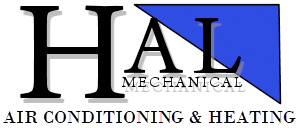When it comes to home heating, furnaces play a pivotal role in ensuring a comfortable living environment during colder months. Understanding the various components that make up a furnace is crucial for homeowners, as it enables them to recognize potential issues, perform basic maintenance, and communicate effectively with heating professionals. Today, we at Hal Mechanical would like to take a closer look at the key parts of a furnace and their functions.
What is the Most Important Parts of a Furnace?
1) Thermostat: At the forefront of furnace operation is the thermostat. This device serves as the control center, allowing homeowners to set the desired temperature. Modern thermostats often come with programmable features, enabling users to create heating schedules that align with their daily routines.
2) Burner: The burner is responsible for igniting the fuel, typically natural gas or propane, to produce heat. Ensuring the burner is clean and free of debris is essential for efficient combustion.
3) Combustion Chamber: This is the space where the fuel mixes with air and is ignited by the burner. The combustion process generates heat that will be distributed throughout the home.
4) Heat Exchanger: As the name suggests, the heat exchanger transfers heat from the combustion chamber to the air that circulates through the system. A cracked or damaged heat exchanger can pose safety risks, as it may lead to the release of harmful gases into the home.
5) Blower Motor: The blower motor is responsible for circulating air throughout the heating system and into the living spaces. Regular maintenance of the blower motor, including lubrication and cleaning, is crucial for optimal performance.
6) Air Filter: The air filter plays a vital role in maintaining indoor air quality. It traps dust, debris, and other particles, preventing them from entering the furnace and the home. Regular filter replacement is essential to prevent airflow restrictions and maintain efficiency.
7) Ductwork: Ductwork is the network of pipes or channels that distributes heated air to different rooms in the house. Inspecting and repairing ductwork is crucial for ensuring consistent heating throughout the home.
8) Vent Pipe: Responsible for expelling combustion gases produced during the heating process, the vent pipe directs these gases safely outside the home. Any blockages or issues with the vent pipe can compromise safety and efficiency.
9) Ignition System: Furnaces use various ignition systems, including pilot lights, electronic ignition, or hot surface igniters, to initiate the combustion process. Regular checks and maintenance are necessary to ensure reliable ignition.
10) Gas Valve: The gas valve in a furnace is a crucial component responsible for controlling the flow of natural gas or propane into the burner. Its primary function is to regulate the amount of fuel that reaches the burner, ultimately influencing the heating output of the furnace. The gas valve is a key safety feature in the furnace system, designed to ensure proper combustion and prevent potential hazards associated with gas leaks.
Central Forced Fan Furnace & Boiler Heating Services in Aliante, Centennial, Desert Shores, Eldorado, Enterprise, Green Valley Ranch, Henderson, Lone Mountain Village, North LV, Peccole Ranch, Paradise, Silverado Ranch, Spring Valley, Summerlin, Sunrise Manor, Tuscany Village, Whitney, Winchester & Las Vegas Nevada
Understanding these fundamental components of a furnace empowers homeowners to take a proactive approach to maintenance and promptly address issues as they arise. Regular professional inspections and maintenance are also essential to ensure the longevity and efficiency of the entire heating system. By staying informed about the parts of their furnace, homeowners can create a warm and secure environment for themselves and their families throughout the colder seasons. When you need furnace services in the Las Vegas, NV Valley, contact Hal Mechanical and let us assist you!






